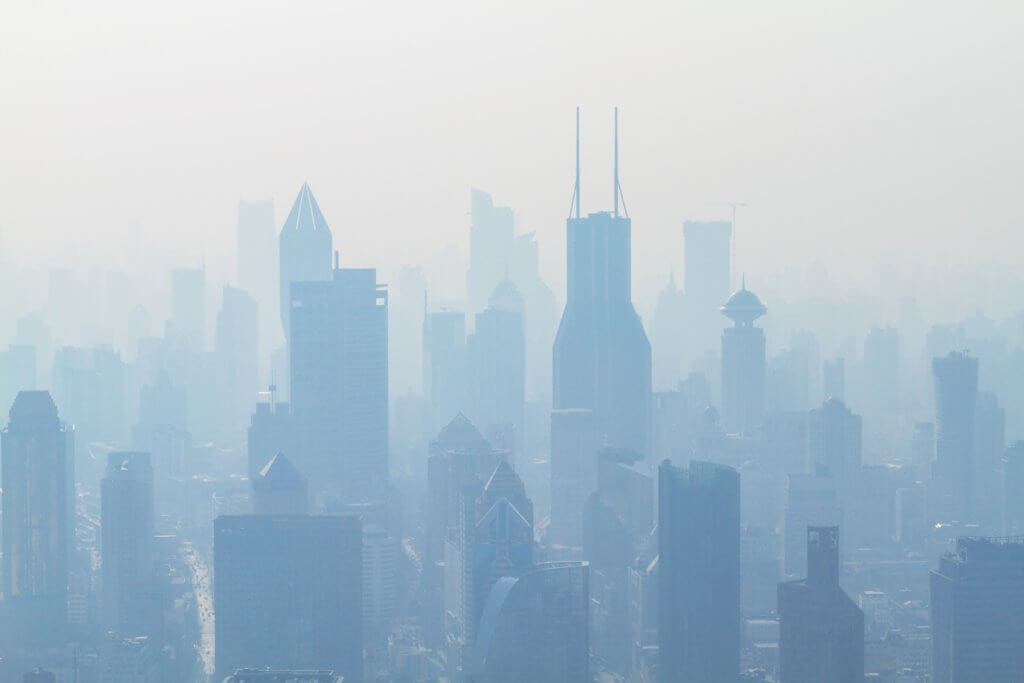NORWICH, United Kingdom — Air pollution may be causing mental problems in babies and toddlers, according to groundbreaking new research. British scientists have discovered a connection between poor air quality and impaired mental ability in children under the age of two in India. They cautioned that, without intervention, the negative impact on long-term brain development could have lifelong consequences.
“Previous research has indicated that poor air quality is associated with cognitive deficits in children, as well as emotional and behavioral issues, which can severely impact families. Tiny particulate matter in the air is a major concern, as it can travel from the respiratory tract into the brain,” says lead researcher Professor John Spencer from the University of East Anglia (UEA), according to a statement from SWNS.
“Until now, studies hadn’t established a link between poor air quality and cognitive problems in infants, when brain growth is most rapid and the brain may be especially vulnerable to toxins. Our study is the first to demonstrate this connection. We collaborated with families in rural India to investigate how indoor air quality affects infants’ cognition.”
Scroll down to see what activities contribute to air pollution

The UEA team partnered with the Community Empowerment Lab in Lucknow, India, a global health research and innovation organization that works with rural communities. They collaborated with families from various socio-economic backgrounds in Shivgarh, a rural community in Uttar Pradesh – one of the Indian states most severely affected by poor air quality.
From October 2017 to June 2019, the researchers assessed the visual working memory and visual processing speed of 215 young children using a specially-designed cognitive task. One display showed consistently flashing colored squares, while another display featured one colored square that changed after each flash.
“This task takes advantage of infants’ tendency to look away from something visually familiar and toward something new. We were interested in whether infants could detect the changing side and how well they performed as we increased the task’s difficulty by including more squares on each display,” Prof. Spencer explains.
The team used air quality monitors in the children’s homes to measure emission levels and air quality, while also accounting for and controlling family socio-economic status.
“This research demonstrates for the first time that there is a relationship between poor air quality and impaired visual cognition during the first two years of life, when brain growth is at its peak. Such impacts could persist across years, negatively affecting long-term development,” Prof. Spencer notes, according to SWNS.
“Conversely, our research suggests that global efforts to improve air quality could benefit infants’ emerging cognitive abilities. This, in turn, could lead to a cascade of positive effects, as improved cognition can enhance long-term economic productivity and reduce the burden on healthcare and mental health systems.”
The study author also highlighted a key factor the team measured — the type of cooking fuel most common in each home.
“We found that air quality was worse in homes that used solid cooking materials like cow dung cakes. Therefore, efforts to reduce cooking emissions in homes should be a primary target for intervention,” Prof. Spencer reports.
The Indian government has initiated a national flagship program called “Ujjwala Yojana,” a program that provides LPG fuel to women below the poverty line across the country.
The findings of the research, funded in part by the Bill & Melinda Gates Foundation, are published in the journal eLife.
What causes air pollution to increase?
- Combustion of fossil fuels: Burning fossil fuels, such as coal, oil, and natural gas, for energy production and transportation releases pollutants like sulfur dioxide (SO2), nitrogen oxides (NOx), carbon monoxide (CO), particulate matter (PM), and volatile organic compounds (VOCs) into the atmosphere.
- Industrial processes: Factories and manufacturing plants release various pollutants, including PM, SO2, NOx, VOCs, and heavy metals, as a byproduct of their operations.
- Transportation: Cars, trucks, buses, and other vehicles emit pollutants like CO, NOx, PM, and VOCs through their exhaust systems. Airplanes and ships also contribute to air pollution.
- Agriculture: Livestock production, agricultural waste burning, and the use of fertilizers and pesticides release pollutants like ammonia (NH3), methane (CH4), and PM into the atmosphere.
- Residential and commercial activities: Heating and cooking with solid fuels, such as wood or coal, in homes and commercial establishments release pollutants like PM, CO, and VOCs.
- Waste disposal: Open burning of waste and emissions from landfills release pollutants like PM, VOCs, and dioxins.
- Deforestation and land-use changes: These activities can increase the levels of pollutants like PM and CO in the atmosphere, as well as release stored carbon dioxide (CO2) and contribute to greenhouse gas emissions.
- Natural sources: Volcanic eruptions, wildfires, dust storms, and biogenic emissions from plants and trees release pollutants like PM, SO2, and VOCs into the atmosphere.
- Construction and mining activities: These activities release large amounts of dust and particulate matter into the air.
- Power plants: Electricity generation, especially from coal-fired power plants, is a significant source of air pollution, releasing SO2, NOx, PM, and other pollutants.
You might also be interested in:
- Are gas stoves really worse for your health than living in a polluted city?
- There’s no safe place left on Earth to avoid deadly air pollution
South West News Service writer Stephen Beech contributed to this report.

